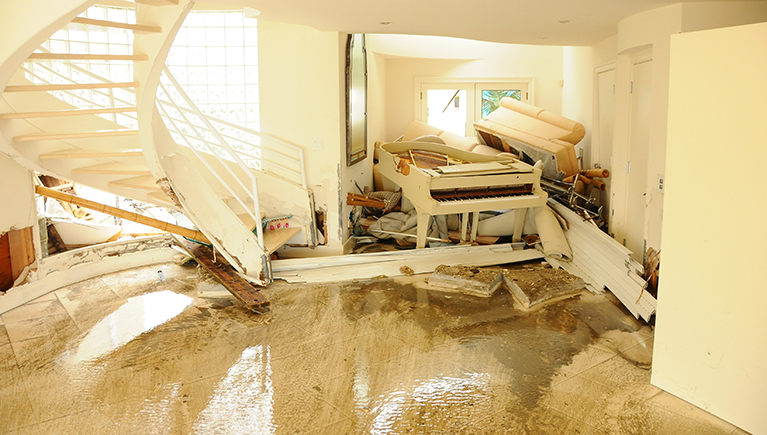Water damage is one of the most common and most serious emergencies your property can ever experience. Whether you’re facing a storm, flood, weakened roof, HVAC leak, busted pipes, overflowing appliances, or sewage backup, a water problem is distressing and threatening to your property’s safety and value. It’s vital to address your water damage emergency quickly to prevent further property damage and implement solutions that work.
Act Fast to Lessen Potential Long-term Water Damage
The cardinal rule for handling any water damage emergency situation that arises in your home, office or commercial property is to have a clear plan that you can implement immediately to stop the damage. The reality is that a property disaster only grows worse the longer you hesitate to do something about it. It can be overwhelming and upsetting to address a disaster on your property, which can lead to delays in taking action unless you’re prepared. Making plans ahead of time to be ready for an emergency can go a long way toward helping you see your property restored speedily and as painlessly as possible after water damage occurs.
Keep these five essential steps in mind as you address a water-related disaster, and you’ll be well on your way to getting your property and your life back to normal.
1. Protect Yourself and Your Possessions
Water damage in all its forms can potentially harm your health and safety due to contaminated water, flood dangers and mold growth. To protect yourself, take these actions:
- Shut off the electricity by switching off the circuit breakers and unplugging devices.
- If you’re in danger of flooding, evacuate the flooded area until authorities deem it safe to return.
- When you reenter the property, wear rubber gloves, waterproof boots and protective clothing.
- Rescue the most valuable items, such as documents or electronics.
2. Stop the Water Damage
The source of the water problem must be identified and stopped to prevent the damage from compounding. Take these steps:
- The most likely cause of water damage is a burst pipe or hot water tank leak. Make sure you know where your shut-off valves are, and use them.
- If a flood is predicted, take preventive measures such as sandbagging and ditching.
- If you experience a leaky ceiling, bring in an expert to pinpoint the source of the leak.
- Keep an eye out for signs of mold — such as foul odors or discolored ceilings and baseboards.
3. Contact Your Insurance Company
Your insurance company is a vital resource in helping you navigate an emergency. Help yourself make an effective claim with these tips:
- Call as soon as possible after the damage occurs, and find out what steps the insurance company requires you to take.
- Get a claims adjuster on site as soon as possible to document the damage and estimate the cost of repairs.
- Take photos of the damaged areas and any affected valuables.
- Keep detailed records and receipts.
4. Dry Things Out
If you can start drying out your property within 24 hours and complete the process in 3 to 4 days.
- Lift wet furniture and remove from flooded areas if possible.
- Place aluminum foil between furniture legs and wet carpet to prevent carpet stains.
- Remove and hang area rugs to dry.
- Use fans and dehumidifiers to help dry out wet areas.
- Set your air conditioning to the “on” position to help remove humidity.
- Professional grade equipment used by restoration companies may be needed.
5. Clean and Restore Your Property
The aftermath of water damage can take time and effort to address, which is why it’s helpful to turn to experts in water damage repairs, such as TRILINK Restoration Services. Calling on professionals is an effective way to handle the complications that may arise from water damage. Keep these rules in mind:
- Determine what is salvageable and discard anything that is too damaged or no longer safe to use.
- Drywall, insulation, flooring, carpeting and baseboards may need to be removed and replaced to prevent mildew and mold growth.
- Moisture can get into places that you can’t see or easily find, so bring in professionals with specialty equipment such as moisture detectors, hygrometers and remote cameras to find trapped residual water.
- Also seek professional advice on damaged property such as documents and electronics, which can often be restored with specialty equipment.
You may decide that it’s best to hire a professional to restore water damage in Kansas City to ensure it’s all done correctly. If you’re a big DIY-er, then hopefully these tips will help you.

